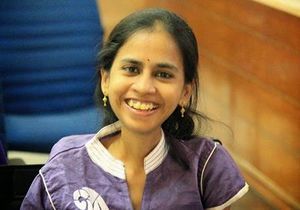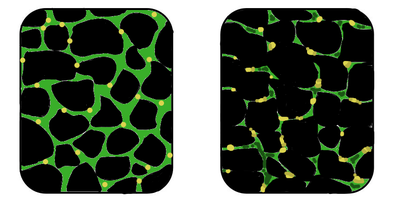Muscular Dystrophy: Difference between revisions
No edit summary |
No edit summary |
||
| Line 5: | Line 5: | ||
</div> | </div> | ||
== Introduction == | == Introduction == | ||
[[File:Muscular Dys.jpg|right|frameless]] | |||
The term "muscular dystrophy" incorporates an assortment of [[Genetic Conditions and Inheritance|hereditary disorders]] that lead to progressive, generalized disease of the muscle prompted by inadequate or missing glycoproteins in the [[Muscle|muscle cell]] plasma membrane. Muscular dystrophy (MD) is a [[Non-Communicable Diseases|non-communicable disorder]] with abundant variations. Each has its pattern of inheritance, onset period, and the rate at which muscle is lost. Alterations in specific genes cause different representations of this disease<ref name=":0">LaPelusa A, Kentris M. [https://www.ncbi.nlm.nih.gov/books/NBK560582/ Muscular Dystrophy]. StatPearls [Internet]. 2020 Jul 21.Available from: https://www.ncbi.nlm.nih.gov/books/NBK560582/<nowiki/>(accessed 24.2.2021)</ref>. | The term "muscular dystrophy" incorporates an assortment of [[Genetic Conditions and Inheritance|hereditary disorders]] that lead to progressive, generalized disease of the muscle prompted by inadequate or missing glycoproteins in the [[Muscle|muscle cell]] plasma membrane. Muscular dystrophy (MD) is a [[Non-Communicable Diseases|non-communicable disorder]] with abundant variations. Each has its pattern of inheritance, onset period, and the rate at which muscle is lost. Alterations in specific genes cause different representations of this disease<ref name=":0">LaPelusa A, Kentris M. [https://www.ncbi.nlm.nih.gov/books/NBK560582/ Muscular Dystrophy]. StatPearls [Internet]. 2020 Jul 21.Available from: https://www.ncbi.nlm.nih.gov/books/NBK560582/<nowiki/>(accessed 24.2.2021)</ref>. | ||
| Line 10: | Line 11: | ||
There is no cure for MD. Physiotherapists and other health professionals work on improving muscle and joint function and slowing muscle deterioration so people with MD can live as actively and independently as possible. | There is no cure for MD. Physiotherapists and other health professionals work on improving muscle and joint function and slowing muscle deterioration so people with MD can live as actively and independently as possible. | ||
Image: A social worker from Tamil Nadu, India, was suffering from muscular dystrophy. She (along with her sister) made helping people with similar ailment their life's aim by building a center to help with the treatment of physically challenged people. She passed away on Jan 15th 2017. | |||
== Eitiology == | == Eitiology == | ||
Revision as of 07:26, 24 February 2021
Original Editor - Lucinda hampton
Top Contributors - Lucinda hampton, Jess Bell, Robin Tacchetti, Vidya Acharya, Rucha Gadgil, Tarina van der Stockt, Kim Jackson, Uchechukwu Chukwuemeka, Kehinde Fatola, Shreya Pavaskar and Olajumoke Ogunleye
Introduction[edit | edit source]
The term "muscular dystrophy" incorporates an assortment of hereditary disorders that lead to progressive, generalized disease of the muscle prompted by inadequate or missing glycoproteins in the muscle cell plasma membrane. Muscular dystrophy (MD) is a non-communicable disorder with abundant variations. Each has its pattern of inheritance, onset period, and the rate at which muscle is lost. Alterations in specific genes cause different representations of this disease[1].
The muscular dystrophies are characterized by progressive muscular atrophy and weakness. In most varieties the muscles of the limb girdles (the pelvic and shoulder muscles) are involved[2]. Over time, people with MD lose the ability to do things like walk, sit upright, breathe easily, and move their arms and hands[3].
There is no cure for MD. Physiotherapists and other health professionals work on improving muscle and joint function and slowing muscle deterioration so people with MD can live as actively and independently as possible.
Image: A social worker from Tamil Nadu, India, was suffering from muscular dystrophy. She (along with her sister) made helping people with similar ailment their life's aim by building a center to help with the treatment of physically challenged people. She passed away on Jan 15th 2017.
Eitiology[edit | edit source]
Muscular dystrophy most often results from defective or absent glycoproteins in the muscle membrane. Each type of muscular dystrophy results from different gene deletions or mutations, causing various enzymatic or metabolic defects. Image: In the affected muscle (right), the tissue has become disorganized and the concentration of dystrophin (green) is greatly reduced. Dystrophin forms an integral part of a muscle's cytoskeleton and links the contractile apparatus to the sarcolemma.
- In 1986, researchers discovered the gene that, when defective or flawed, causes Duchenne muscular dystrophy. The muscle protein associated with this gene was named dystrophin. The dystrophin gene is the largest in the human genome, with 79 exons. The dystrophin gene is subject to a high rate of spontaneous mutations because of its enormous size (>2 × 106 bases)[1].
- Duchenne muscular dystrophy occurs when that gene fails to make dystrophin. Becker muscular dystrophy occurs when a different mutation in the same gene results in some dystrophin, but it's either not enough or it's poor in quality. Scientists have discovered and continue to search for the genetic defects that cause other forms of muscular dystrophy.
- Most of the muscular dystrophies are a form of inherited disease called X-linked disorders or genetic diseases that mothers can transmit to their sons even though the mothers themselves are unaffected by the disease[4].
Epidemiology[edit | edit source]
Most Common Childhood Muscular Dystrophy: Duchenne.
Most Common Adult Muscular Dystrophy: Myotonic.
Prevalence Of Muscular Dystrophy (General Population): 16 to 25.1 per 100,000.
Frequency Of Muscular Dystrophy (General Population): 1 per 3,000 to 8,000.
Incidence Of Muscular Dystrophy (Male Births): 1 per 5,000 or 200 per 1,000,000
Sub Heading 3[edit | edit source]
Resources[edit | edit source]
- bulleted list
- x
or
- numbered list
- x
References[edit | edit source]
- ↑ 1.0 1.1 LaPelusa A, Kentris M. Muscular Dystrophy. StatPearls [Internet]. 2020 Jul 21.Available from: https://www.ncbi.nlm.nih.gov/books/NBK560582/(accessed 24.2.2021)
- ↑ Britannica Muscular Dystrophy Available from: https://www.britannica.com/science/muscle-disease/The-muscular-dystrophies(accessed 24.2.2021)
- ↑ Kidz health MD fact sheet Available from: https://kidshealth.org/en/parents/md-factsheet.html (last accessed 24.2.2021)
- ↑ WebMD MD Available from: https://www.webmd.com/children/understanding-muscular-dystrophy-basics?page=-1281(accessed 24.2.2021)








